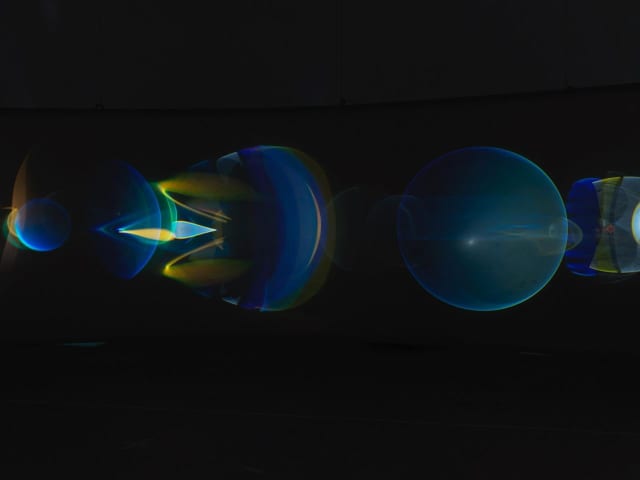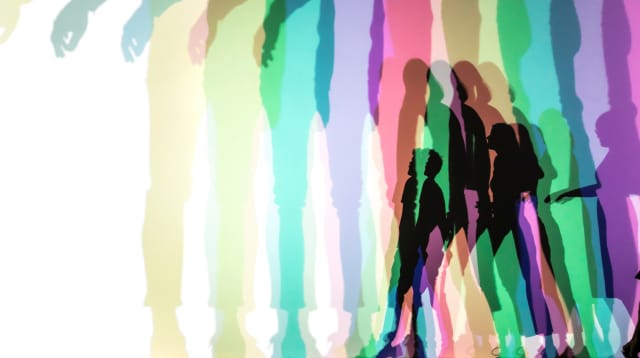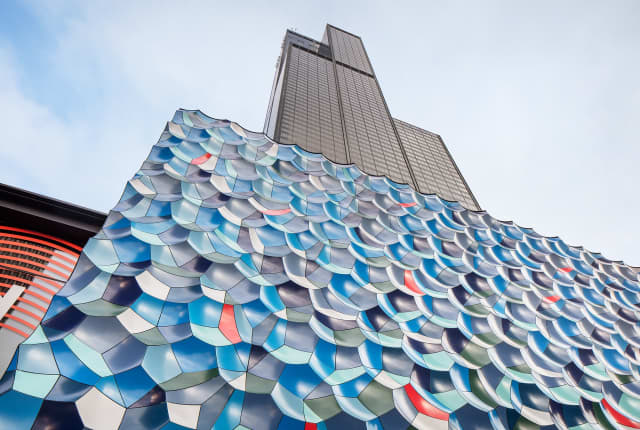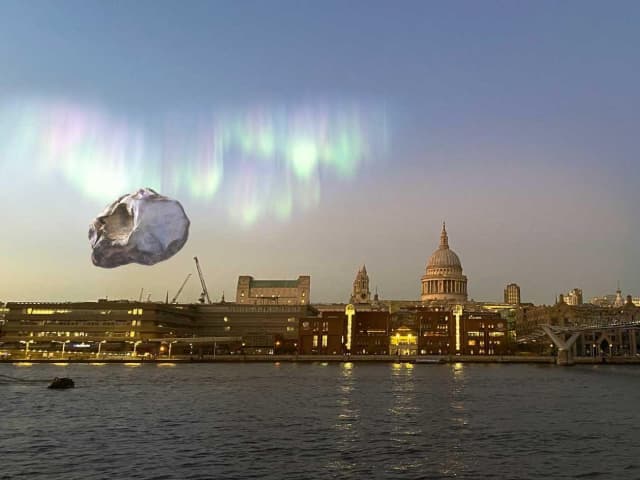On a curved screen in the darkened gallery, an evocative lightshow of ever-changing shapes, colours, and shadows, created through reflection and refraction of light, emerges and evolves. The sequence develops and vanishes in a slow continuum that is at once two-dimensional and architectural. The viewer, despite knowing that the shapes she is watching emerge are only light projections sees space and three-dimensional forms where there are none. Behind the screen, the viewer can glimpse the apparatuses that are responsible for the complex lightshow – an orchestra of lenses, prisms, mirrors, and colour-effect filters. Many of these lenses were languishing in storage at the studio, the leftover pieces from other artworks and experiments, before being retooled for this artwork. Motors turn the various elements within the spotlights, so that the movements unleash a sequence of distortions, reflections, and refractions on the screen. The resulting composition makes visible the physical phenomenon of light bending and splitting. Although the sequence repeats in a continuous loop, the abstract nature of the work makes it appear always new, beyond simple comprehension.
As inspiration for his projection works, Olafur Eliasson cites the experiments in film and photography of the early twentieth century by constructivist and expressionist artists like Hans Richter and Laszlo Moholy-Nagy.












